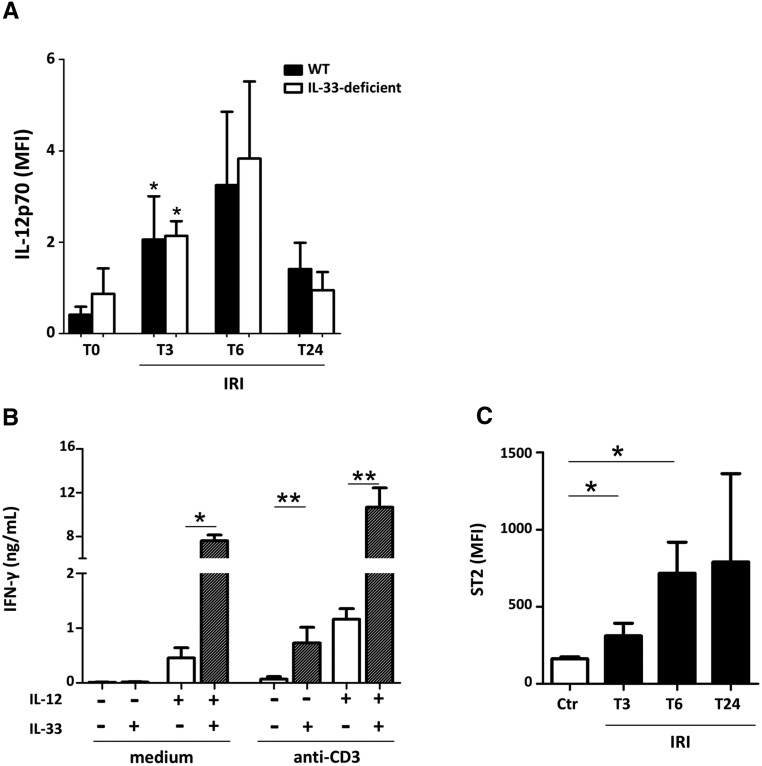Figure 9.
Increase of circulating IL-12 and surface ST2 overexpression on iNKT cells precede the IL-33-dependent phase of innate immune cell infiltration. WT and IL-33Gt/Gt (IL-33–deficient) mice were subjected to 32 minutes of unilateral ischemia (IRI) after contralateral nephrectomy. After 3, 6, or 24 hours (T3, T6, or T24, respectively) of reperfusion, peripheral blood was collected. (A) Increase of circulating IL-12 during IRI. Plasma levels (relative mean fluorescence intensity [MFI]) of IL-12p70 were significantly increased after IRI at 3 hours after reperfusion compared with untreated (T0) mice. Data represent the mean±SEM of five to six mice per group and time point. Two-tailed Mann–Whitney U test. (B) IL-33 acts as a cofactor of IL-12 to enhance IFN-γ production by iNKT cells. Freshly sorted splenic iNKT α-GC–loaded CD1d TT(+) CD5(+) cells (details are in ref. 29) from WT C57BL/6 mice were cultured for 48 hours on plates (25×103 per well) coated with or without anti-CD3 mAb and/or IL-12 (20 ng/ml) in the presence (hatched columns) or absence (white columns) of IL-33 (10 ng/ml). IFN-γ concentrations in the supernatants were quantified by ELISA. Data represent the mean±SEM of three independent experiments. Two-tailed Mann–Whitney U test was used for two group comparisons. (C) Increase of surface ST2 levels on WT C57BL/6 iNKT cells during IRI. Surface levels of ST2 (MFI) on PBS57-loaded CD1d TT(+) CD3(+) cells after gating on live CD45(+) cells were significantly increased after IRI at 3 and 6 hours after reperfusion compared with their untreated (T0) counterparts. Data represent the mean±SEM of three mice for each time point. Two-tailed Mann–Whitney U test. *P<0.05; **P<0.01.

